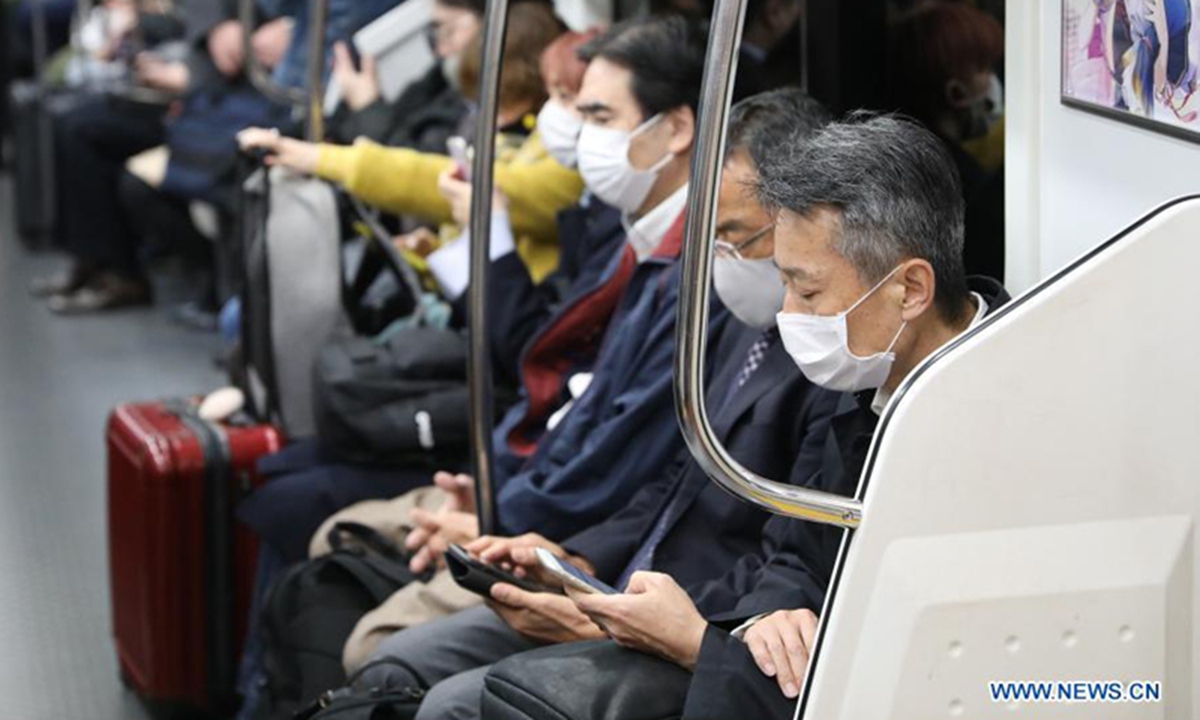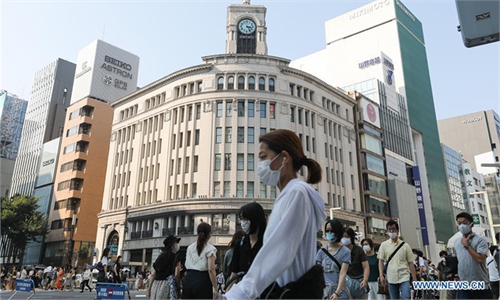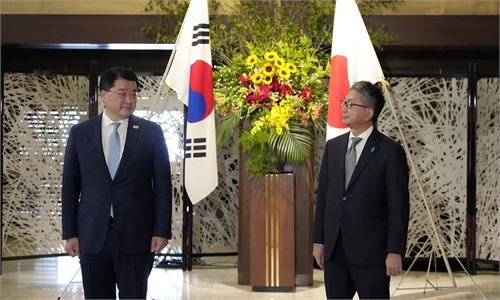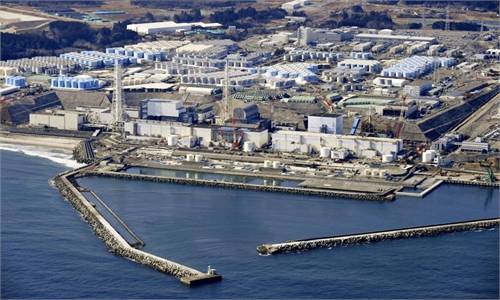COMMENTS / EXPERT ASSESSMENT
A lesson drawn from Japan-style economic stagnation

People wearing face masks sit in a train in Tokyo, Japan, on November 12. Photo: Xinhua
Japan's new Prime Minister Fumio Kishida last week approved a colossal $490 billion fiscal spending package to prevent the country from slipping into a painful recession. However, Japan, with its shrinking population and waning business competitiveness, is unlikely to recover to its pre-pandemic economic size if the government fails to address the structural constraints facing the country.Tokyo hopes to spur consumer spending by splurging government cash handouts to Japanese households and smaller companies, but previous rounds of fiscal stimulus programs have largely ended in the saving accounts of Japanese families, with the national economy struck in a cycle of expansion and contraction.
The world's third largest economy shrank by an unexpected 3 percent in the July-September quarter this year, following tightened pandemic precautionary measures in the summer and severe semiconductor shortages that battered the country's automakers, forcing many of them to cut production by as much as 40-50 percentcompared with the same time last year.
The wobbling economy has been struggling to find its footing in the face of coronavirus restrictions and a global supply chain crunch. Other major economies, like China and the US, have already surpassed their pre-pandemic peak, while Japan's GDP remains smaller than it was in the final quarter of 2019.
Behind Prime Minister Kishida's new focus on raising workers' wages and making life easier for middle-class households , there is a growing belief that the trickle-down economic approach implemented by former Prime Minister Shinzo Abe - who was Japan's longest serving prime minister -- has eroded living standards of the majority of Japanese families from 2012 onwards. Last year, an estimated 9.2 million in the bottom income racket suffered twice as big a hit to earnings as 2.2 million people in the top bracket, according to newly released data.
The latest 56 trillion-yen ($490 billion) injection, the third stimulus plan since Covid-19 struck in 2020, "is enough to deliver a sense of safety and hope to Japanese people," Kishida said last week. He said the fiscal spending, accounting for roughly 10 percent of Japan's annual GDP, will rise to $600 billion including other funding such as loans from private companies.
Former prime ministers Yoshihide Suga and Shinzo Abe poured 78 trillion yen in total into the economy in 2020, though Japanese economists have raised doubts over how effective that big stimulus has been.
Japan already has an enormous public debt, accounting for more than 250 percent of its GDP, according to data released by the International Monetary Fund (IMF). So, the government's excess fiscal spending measures could undermine Japan's fiscal health by increasing the debt burden, experts have warned.
Japanese lawmakers in both Kishida's ruling LDP and in opposition parties have advocated greater spending to stimulate the largely stagnant Japanese economy. Some in the LDP say it isn't a problem now because Japan issues debt in its own currency -- the yen, and its inflation and bank interest rates are both around zero, and the government is currently paying only 0.1% interest on its 10-year treasury bonds.
However, Kishida's spending plans have drawn criticism, with some economists saying the government's generous cash handouts will not address structural problems such as poor productivity growth and an aging population. Others point to the size of the nation's debt, which totals to the equivalent of $11 trillion as of the end of September this year - which could explode eventually and hamstring Japan.
Rather than focusing on boosting fiscal spending, Japanese economists claim that the country's policy-makers should look at effective ways to lift long-term economic growth such as opening its doors to more migration. The country still has far fewer immigrants than the U.S. As of late 2020, Japan hosted 1.72 million foreign workers out of a total population of 125.8 million, or roughly 2.5 percent of its working population.
Immigration has long been a taboo in Japan as many prize the country's ethnic homogeneity, but pressure has mounted to open up its borders due to an acute labor shortage given its dwindling and ageing population.
Japan's economy hasn't made any headway since early 1990s when the country's property bubble imploded, and was further maimed by the grisly 2008-09 global financial crisis. Economists worldwide have studied the "lost 30 years" of Japanese economy, while always warning that other major economies should do their best to prevent Japan-style stagnation in their countries.
The author is an editor with the Global Times. bizopinion@globaltimes.com.cn



